Are people in the bush really physically active? A systematic review and meta-analysis of physical activity and sedentary behaviour in rural Australians populations
- PMID: 32373329
- PMCID: PMC7182355
- DOI: 10.7189/jogh.10.010410
Are people in the bush really physically active? A systematic review and meta-analysis of physical activity and sedentary behaviour in rural Australians populations
Abstract
Background: Physical inactivity is a major risk factor for non-communicable disease and premature mortality. People who live in rural settings are usually regarded as more physically active than those living in urban areas, however, direct comparisons between these populations are scarce. We aimed to summarise the prevalence of physical inactivity and sedentary behaviour in rural settings in Australia, compared to urban counterparts.
Methods: We searched six databases (AMED, Embase, Medline; CINAHL, SPORTDiscus; and RURAL) and identified 28 observational studies that investigated the levels of physical inactivity and/or sedentary behaviour in adults aged 18 years and over in rural Australia. Random effects meta-analysis was used to generate pooled prevalence estimates.
Results: Physical inactivity was four percentage points (95% confidence interval (CI) = 0.4 to 8) higher in rural populations compared to urban populations. There was a one percentage point (95% CI = -3 to 5) prevalence difference of physical activity in the rural populations. Rural populations reported on average 7.8 hours of sedentary time per day (95% CI = 5 to 10) and the prevalence of high levels of sedentary behaviour (≥to 8 hours per day) was 7% (95% CI = -8 to -7) greater in urban areas compared to rural areas.
Conclusions: People living in rural areas are just as physically inactive as people who live in urban areas. Our findings challenge the popular views that rural lifestyles result in people engaging more frequently in physical activity. Public health campaigns promoting physical activity in rural settings are just as necessary as in urban settings.
Copyright © 2020 by the Journal of Global Health. All rights reserved.
Conflict of interest statement
Conflict of interest: The authors completed the ICMJE Unified Competing Interest form (available upon request from the corresponding author), and declare no conflicts of interest.
Figures
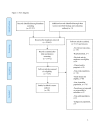
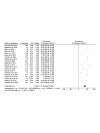
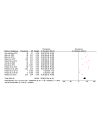

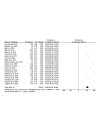
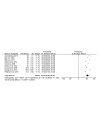







Similar articles
-
Trends of low physical activity among Iranian adolescents across urban and rural areas during 2006-2011.Sci Rep. 2020 Dec 7;10(1):21318. doi: 10.1038/s41598-020-78048-0. Sci Rep. 2020. PMID: 33288806 Free PMC article.
-
[Leisure-time physical exercise and sedentary behavior among Chinese elderly, in 2010].Zhonghua Liu Xing Bing Xue Za Zhi. 2014 Mar;35(3):242-5. Zhonghua Liu Xing Bing Xue Za Zhi. 2014. PMID: 24831618 Chinese.
-
Obesity and obesity-related behaviors among rural and urban adults in the USA.Rural Remote Health. 2015 Oct-Dec;15(4):3267. Epub 2015 Oct 13. Rural Remote Health. 2015. PMID: 26458564
-
Objective measurement of physical activity and sedentary behavior among South Asian adults: A systematic review.PLoS One. 2020 Aug 5;15(8):e0236573. doi: 10.1371/journal.pone.0236573. eCollection 2020. PLoS One. 2020. PMID: 32756595 Free PMC article.
-
Epidemiology of physical inactivity in Nigeria: a systematic review and meta-analysis.J Public Health (Oxf). 2022 Aug 25;44(3):595-605. doi: 10.1093/pubmed/fdab147. J Public Health (Oxf). 2022. PMID: 33982123 Free PMC article.
Cited by
-
Habitual Physical Activity of People with or at Risk of Diabetes-Related Foot Complications.Sensors (Basel). 2023 Jun 22;23(13):5822. doi: 10.3390/s23135822. Sensors (Basel). 2023. PMID: 37447670 Free PMC article.
-
Health literacy and uptake of healthy diet and exercise amongst individuals with prehypertension in Thailand.Health Promot Int. 2025 May 13;40(3):daaf089. doi: 10.1093/heapro/daaf089. Health Promot Int. 2025. PMID: 40531173 Free PMC article.
-
Exercise Promotion in Rural Areas.Indian J Endocrinol Metab. 2022 Jul-Aug;26(4):391. doi: 10.4103/ijem.ijem_175_22. Epub 2022 Sep 20. Indian J Endocrinol Metab. 2022. PMID: 36185962 Free PMC article. No abstract available.
-
"My Back Exercise App"-mHealth for Low Back Pain: Development and Usability Testing.J Healthc Inform Res. 2024 Nov 29;9(1):67-87. doi: 10.1007/s41666-024-00179-0. eCollection 2025 Mar. J Healthc Inform Res. 2024. PMID: 39897100 Free PMC article.
-
Movement Behaviour and Health Outcomes in Rural Children: A Systematic Review.Int J Environ Res Public Health. 2023 Jan 31;20(3):2514. doi: 10.3390/ijerph20032514. Int J Environ Res Public Health. 2023. PMID: 36767880 Free PMC article.
References
-
- World Health Organization. Global recommendations on physical activity for health. Geneva: World Health Organization; 2010. - PubMed
-
- Committe. PAGA. 2018 Physical Activity Guidelines Advisory Committee Scientific Report. Washington, DC: U.S. Department of Health and Human Services, 2018. 2018.
-
- United Nations DoEaSA, Population Division. World Urbanization Prospects: The 2014 Revision2015.
-
- AIoHaW. Australia’s health 2018. Australia’s health series no 16 2018:AUS 221.
